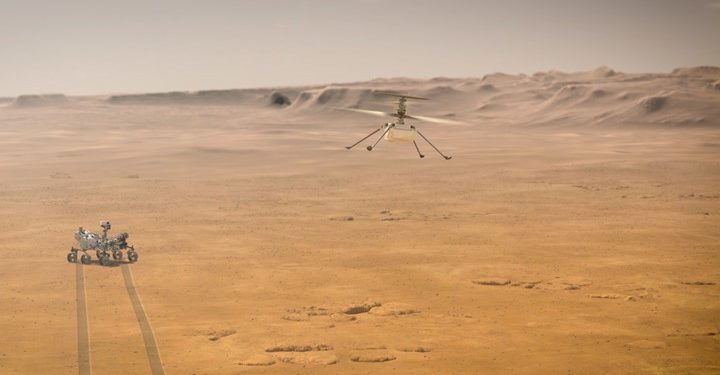You may have heard variations of the same pronouncements for over three decades, but this one’s different. While the older pronouncements were by politicians and leaders in government, it’s now being made by the scientific and engineering community, private industry, governments, and to a larger extent by people across the world in concert. This collective determination of humanity will change the way we live our lives forever towards an exciting and productive future.
NASA just completed it’s most ambitious and scientifically complex mission to date – and totally nailed it.
This week can be regarded as one of the historic dates in the quest for making human life multi-planetary. The Perseverance rover (part of NASA’s Mars 2020 mission), landed on Mars. This is NASA’s most ambitious and scientifically complex mission to date.
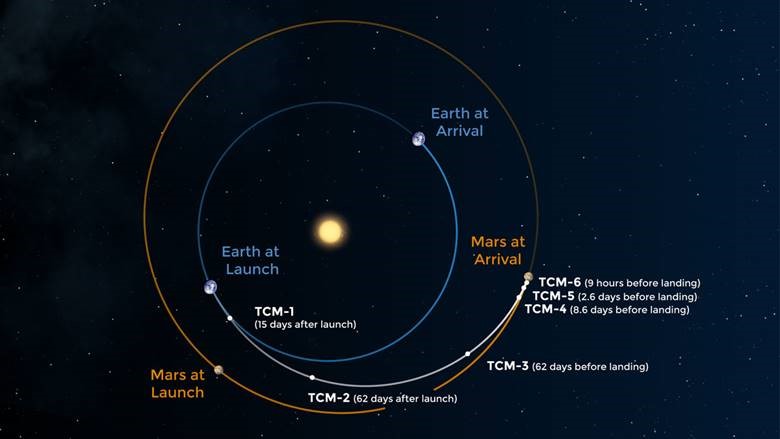
After traveling over 293 million miles from Earth for 203 days, the Mars 2020 mission completed its last leg of its journey successfully. The destination is an ancient dried river delta at the edges of “Jezero” crater near “Isidis planitia”. The crater was a gigantic lake over 3.5 billion years ago, with rivers flowing into the crater. The flooding created an outflow channel from the crater at the right edge.

There’s something special about this landing site.
The landing site was selected after examining over 60 other potential candidates. The river delta may contain minerals washed away from all the surrounding areas and may contain evidence of microbial life trapped in the clay deposits at the delta. Data sent by NASA’s Mars reconnaissance orbiter and its compact reconnaissance imaging spectrometer for Mars (CRISM) and context camera (CTX), have shown that the deposits containing carbonates, minerals that have the excellent property of preserving fossilized life on earth.
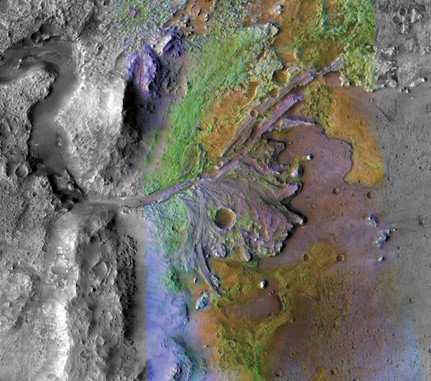
The Mars 2020 spacecraft is a pretty sophisticated whip.
The Mars 2020 Spacecraft builds on technologies proven during NASA’s Mars science laboratory (MSL) mission of 2011. The spacecraft comprises five key components. The cruise stage, back shell, descent stage, payload (rover), and the heat shield.
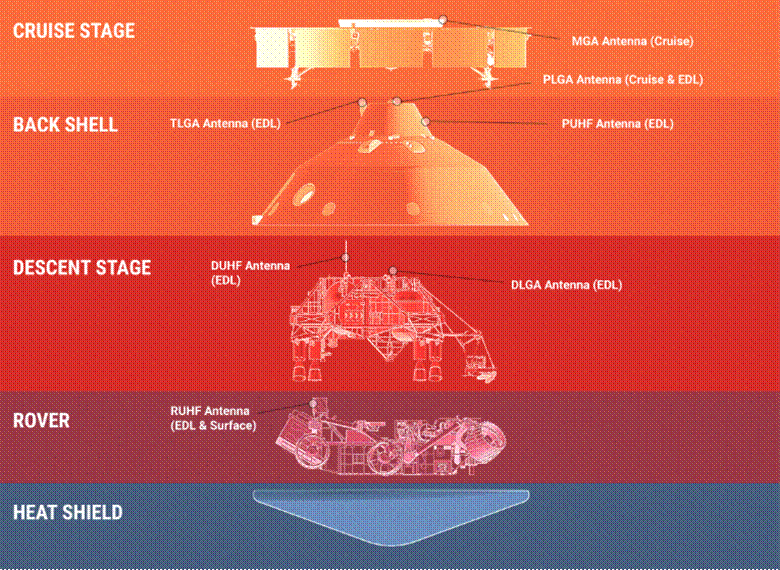
The cruise stage sustains the spacecraft and its instrumentation during the seven-month journey of the spacecraft. It contains instruments to maintain communications with mission control by using radio signals. A low-gain antenna (TLGA) is used for communicating with mission control closer to earth and a cruise medium-gain antenna (CMGA) is used to communicate as the spacecraft is closer to Mars. Other unique equipment on the cruise stage is the star scanner and sun scanner, which are “GPS” for the spacecraft, to know its location precisely relative to the sun and other stars. All these instruments are powered by solar panels. The cruise stage also contains the propulsion system for the entire spacecraft. Two spherical lightweight tanks made of aluminum carry hydrazine propellant, which power two clusters of thrusters to control the “yaw and roll” of the spacecraft.
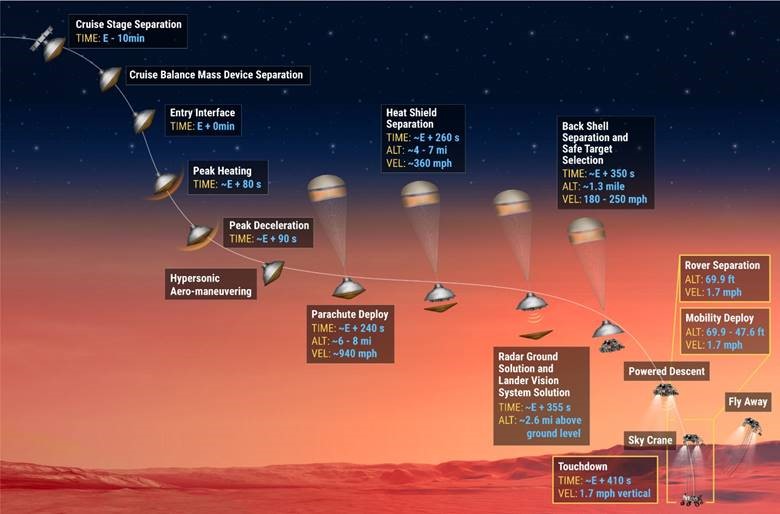
The aeroshell contains the back shell and the heat shield, which protect the descent stage and the payload (rover). The back shell contains additional thrusters, which decelerate the entry stage in the Martian atmosphere. The heat shield decelerates the entry-stage further in the Martian atmosphere. Although the Martian atmosphere is less than 1% dense compared to the Earth’s, the heat shield heats to 2372 deg Fahrenheit during the entry phase. At a vertical altitude of about 8 miles above the Martian surface, a supersonic descent parachute within the back shell deploys. This slows down the entry-stage from 932 miles/hr. to 372.82 miles/hr. The heat shield separates activating the terrain relative navigation system (TRNS), which is unique to this spacecraft. The TRNS scans the landing zone for any obstacles and guides the descent stage to a site with optimal landing conditions.
At a vertical altitude of 13.04 miles and a speed of 198.83 miles/hr., the back shell and the parachute separate from the Landing stage. The landing stage is like the one used on the mars science laboratory (MSL) mission, which landed the rover Curiosity on Mars in 2012.
Percy made quite an entrance.
The sky crane system is a rocket-powered platform with the payload attached to its underbelly. Powered by eight thrusters, which are powered by non-propellant hydrazine. Thrusters are on the edges of the sky crane to gimble, to not damage the payload.
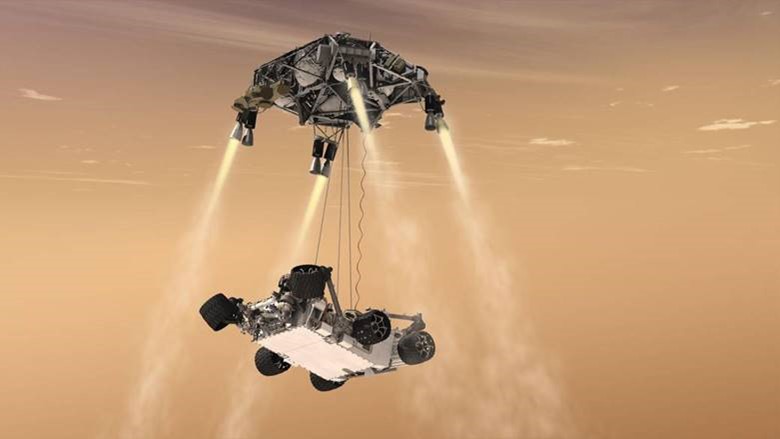
At an altitude of 68.89 feet above the surface of mars with a vertical velocity of 16.77 miles/ hr., the sky crane system slowly lowers the rover perseverance to just over a meter from the surface of Mars using nylon cables. After touchdown, the cables are jettisoned and the sky crane flies away to crash land at a safer distance. It is important to note that a consequent flawless operation of the revolutionary sky crane system has the potential for future missions with bigger payloads to the surface of Mars.
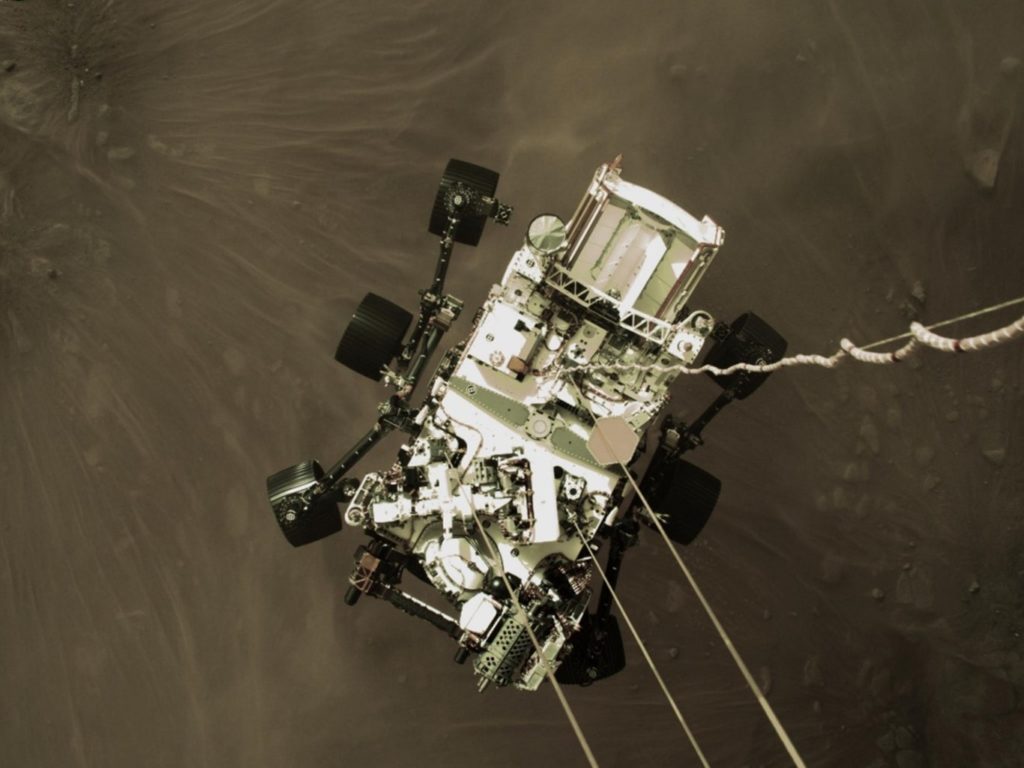
The Perseverance rover (nicknamed Percy), may look similar to its older brother Curiosity by outward appearances, but it is heavier, sturdier, and carries more advanced scientific payloads compared to the Curiosity. Weighing just over 2263 pounds and the size of a small SUV. The Perseverance is the heaviest extra-terrestrial rover ever deployed.
The scientific objectives of the Perseverance include scouting for microhabitats on the surface of Mars, which could have sustained microbial life on Mars. Collection and Analysis of samples for bio-signatures in soil and rock samples. Storing these samples for a future mission to return them to earth. Analyzing the Martian atmosphere for future manned missions and studying weather patterns on Mars.
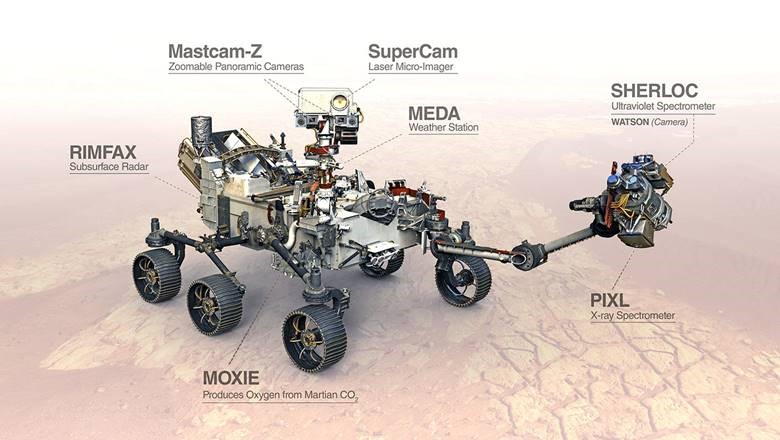
The Mars helicopter arrived in style, too.
The path-breaking mission of the Perseverance, which has the potential to revolutionize planetary exploration, is a small helicopter with coaxial rotors called the Ingenuity. Planned for deployment from the Perseverance Rover in mid-March 2021, this mission would rival that of the first powered human flight on earth over a century ago.
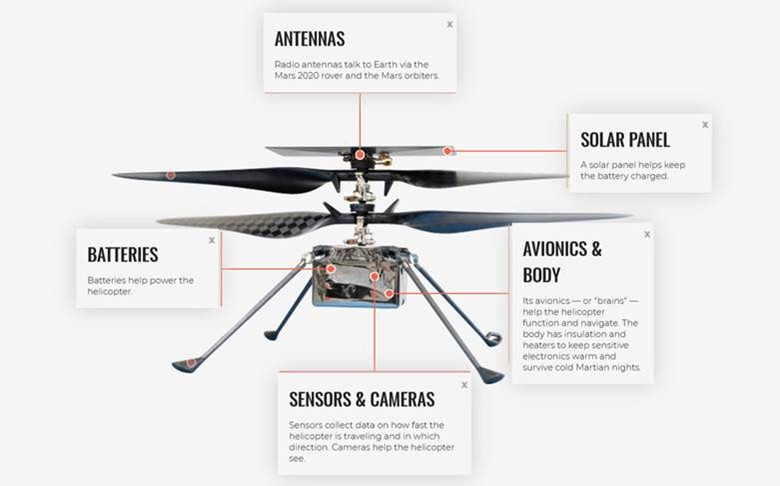
The test phase would include five flights over 30 days. Ingenuity will conduct flights at an altitude ranging from 10 to 16 feet in the testing phase. Flight endurance is limited to 90 seconds per flight with a maximum range of 50 meters.
If the technology demonstrator program is successful, it can pave way for bigger and more sophisticated flying vehicles to explore the surface of Mars.
Rovers on the surface of Mars are limited by their endurance, speed and terrain over the surface of Mars. Flying vehicles over the surface can cover greater distances, and area compared to rovers. Equipped with onboard scientific instrumentation, we can gather more precise and accurate data compared to orbiters around Mars.
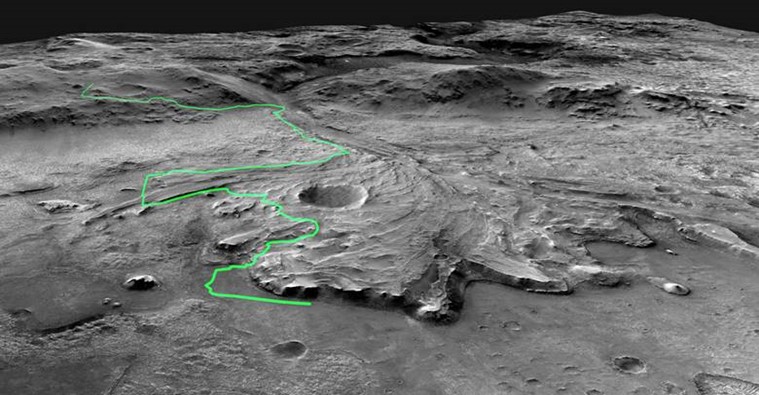
Possible path Perseverance rover will take across the Jezero Crater (Link: https://mars.nasa.gov/resources/25540/possible-path-for-perseverance-rover/?site=msl)

It is no wonder that billions of people are following the Mars 2020 mission.
This mission is a small but significant step towards making life multi-planetary and providing hope to billions, proving that human ingenuity and perseverance will always prevail on this planet and other planets. Today, we are witnessing technology helping to pave the way to human colonization in space.
